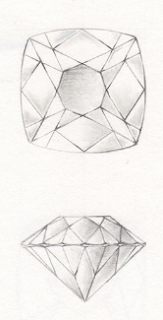Written by the TreasureGuide for the exclusive use of treasurebeachesreport.blogspot.com.
Find Made by Gavin on the Arrr Booty.
Photo submitted by Jonah Martinez.
Jonah M. sent the above photo and said, "Find made by Gavin. Eric's working hard trying to make some more great finds."
That is one nice piece of Kang Hsi. Hope they find more of the same item.
Congrats to Gavin and the crew of the Arrr Booty! And thanks to Jonah for sharing!
---
Yesterday I showed an amazing ring that was found by Warren D. (If you missed it, you might want to go back and take a look.) When you find an item, it helps to know where it came from and where it has been up until the time you found it. It is also nice to be able to determine its age.
There are a lot of things that might give some clues. First is the where it was found, including the layers of sand above and surrounding the item. The sand adhering to the item might give you some clues about where it has been. So will the patina or crust. I can't talk about all of that today, but I am going to talk about the diamonds. Although the type of setting and other features of a ring can tell you a lot, I'm just going to focus on diamonds right now.
Although diamonds were used in jewelry much earlier, diamond cutting did not being until the 14th century. Then they were more polished than cut.
Diamonds were mounted with what you might call a "point cut" in the 15th century. There still wasn't much cutting involved. Here is an example of a 15th century diamond ring sold by Christies. You can see the point or pyramid.
 |
| 15th Century "Point Cut" Diamond Sold by Christies. |
True faceting didn't begin until the 16th century. Then the "rose cut" was invented. Diamonds were still rare in jewelry.
Rose cut diamonds have 24 facets. They are domed on top and have a flat bottom. The top looks very much like a geodesic dome.
The old mine cushion cut began in the 18th century. That cut featured a relatively small flat table on top, a very slightly rounded edge, and a deep culet. Below is an example.
 |
| Old Mine Fashion Cut Diamond Shape Source: See ErstWhileJewelry link below. |
By the mid 18th century the Marquise cut was developed.
Of course there are more, but I'll stop there for now. I just wanted to show that you can get a lot of information from the cut of a diamond or any gem.
If you want learn more about the history of cutting diamonds, you'll find an intersting article by using the following link.
https://erstwhilejewelry.com/blogs/stories/history-of-diamond-cutting
It can be very difficult to capture subtle but important details in a photo.
---
Things are heating up in the tropics. There are now two tropical disturbances,both of which have a 70% chance of becoming a cyclone in the next 48 hours.
One has been hanging around the Yucatan, but at some point might head north. The other looks to be heading towards the Yucatan.
Happy hunting,
TreasureGuide@comcast.net
